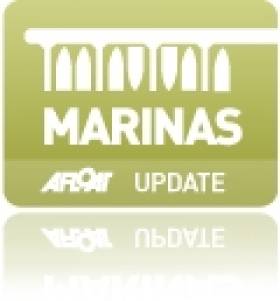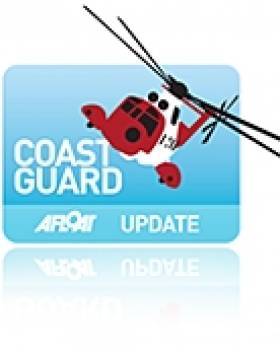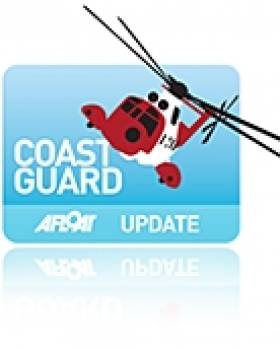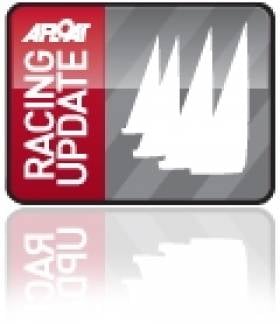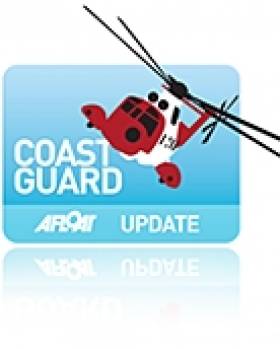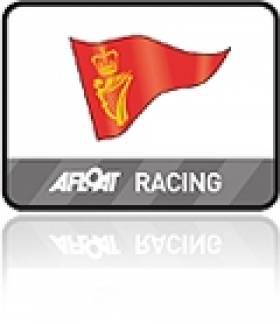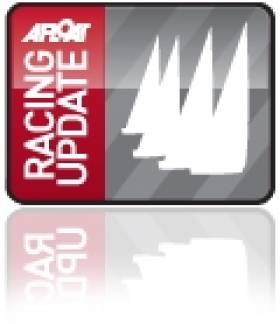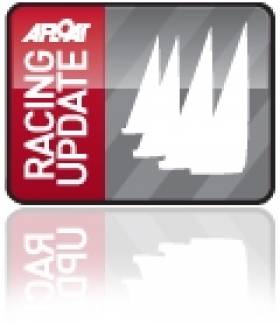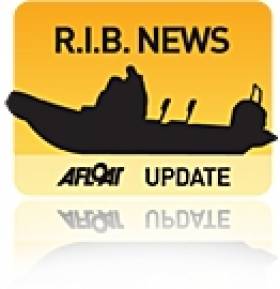Displaying items by tag: yacht
Dun Laoghaire Marina Keeps the Standards High
Dun Laoghaire's superb coastal marina based in the suburbs of Dublin has 820 berths and first opened in 2001. There is plenty to do in Dun Laoghaire with an excellent range of restaurants and bars and not too far to venture into Dublin City.
The management and customer service offered by Dun Laoghaire is excellent with all staff being well trained and very knowledgeable. All facilities are supported at the marina or by neighbouring businesses.

Part of Dun Laoghaire's 820-berth marina, the biggest in Ireland
"The entire team at Dun Laoghaire Marina endeavour at all times to be welcoming and genuinely useful to berth holders and visiting crews." Says Paal Janson CMM, Dun Laoghaire's General Manager. "We take immense pride in our Marina and the service we provide to our customers and this is reflected in the positive comments and feedback we receive throughout the year".
To sum up, this is a well run, professional marina which does everything within its capacity to cater for its berth holders' needs.
The Yacht Harbour Association (TYHA) provides support for marinas and related business throughout the UK and internationally, services include:
The Gold Anchor Award Scheme, which has been operating for 23 years is based on the TYHA Code of Practice for the design construction and operation of marinas. Ratings range from one to five gold anchors. Any award issued is a sure sign of a credible, quality marina with the number of anchors demonstrating the facilities and standard of service available to berth holders and full compliance with statutory regulations.
Irish Vessels Asked to Keep Lookout for Missing Yacht
Ships off Ireland's south and west coasts have been asked by the French coastguard to keep a lookout for a yachtsman who has gone missing on a transatlantic voyage.
In a report that has echoes of missing yacht The Golden Eagle - which sailed into Kerry after an Atlantic crossing from Bermuda many days after schedule - RTÉ News says that the 12-metre yacht La Galatee left French Guiana on 5 August sailing for St Malo in France, but the French coastguard has lost contact with the vessel.
No air and sea searches are being considered at this time, but Irish Coast Guard stations are broadcasting alerts and requests for sightings of the yacht.
Missing Bermuda Yacht Arrives Safely in Co Kerry
A yacht that was reported missing in the Atlantic between Bermuda and Ireland sailed safely into port in Co Kerry this afternoon.
As previously reported on Afloat.ie, the Golden Eagle has been at the centre of an air and sea search operation since failing to arrive at its expected destination of Crookhaven in Co Cork on 15 September.
The yacht - crewed by a 69-year-old Norwegian and a 60-year-old New Zealander - had been out of radio contact since leaving Bermuda in mid August.
But a spokesperson for the Irish Coast Guard has since revealed that the men intentionally turned off their handheld VHF radio to save battery power until they were close to port.
The boat dropped anchor in Portmagee, Co Kerry at 3pm this afternoon, reporting only minor damage to its sails and rigging due to adverse weather which slowed their progress.
More from RTE here.
World Yacht Racing Forum Planned for Portugal
Since its launch in 2008, the World Yacht Racing Forum has become the annual meeting place for leaders in the business of sailing and yacht racing to network and discuss ways in which the sport can be grown and improved globally.
Organised by Informa Yacht Group, the WYRF will once again reassemble the who's who of international yacht racing, including athletes, event organisers, sponsors, cities and venues. The two-day Forum will be held alongside the Yacht Racing Design & Technology Symposium, giving delegates the opportunity to meet high-profile design and technology experts from the race boat industry, and to discuss the latest research and trends in performance boat technology.
Now in its fourth year, the World Yacht Racing Forum is the leading international conference for the yacht racing industry. The 2011 edition of the event will welcome new experts and personalities from the yacht racing scene, and introduce a number of new discussion themes.
Key topics will include an insight into the sponsorship landscape and where sponsors are spending their money, a perspective on successful sponsorship strategies, cost-effective new media including digital, a focus on women in sailing, driving growth via active yacht club management, breaking down the bid process for cities and venues, an audience with the America's Cup teams and organisers, and much more!
Mirabaud & Cie, Private Bankers also returns to the World Yacht Racing Forum as Gold Sponsor of the forum and Presenting Sponsor of the Yacht Racing Images Exhibition launched at the forum in 2009. Mirabaud will present an award for the best yacht racing image of the year as voted by all participants of the forum. The exhibition will also be available online.
The World Yacht Racing Forum is now universally recognised as the platform used by the international yacht racing community to define and debate the sport's key issues, and propose new ideas aimed at improving its structures and commercial value.
Over 400 delegates are expected in the picturesque region of Estoril in December. Delegates can benefit from a 30% early-bird discount before 1 October by registering online at www.worldyachtracingforum.com <http://www.worldyachtracingforum.com>
Search for Yacht Missing Between Bermuda and Ireland
An air and sea search operation is underway for a yacht missing en route from Bermuda to Ireland, The Irish Times reports.
The Golden Eagle has been out of contact since leaving port on 21 August. It was due to arrive with its two-man crew - a 69-year-old Norwegian and a 60-year-old New Zealander - at Crookhaven in West Cork last Thursday.
The Irish Coast Guard told the Press Association said that the Naval Service and Air Corps are involved in the search off the south west coast, and ships in the mid-Atlantic have also been asked to try to contact the yacht.
The yacht is described as being 9.8m (32ft) long, white and with a blue trim on the side.
Sharkbait Wins By a Single Point at SB3 National Championships
The young pretender Ross Vaughan RNIYC took line honours in race one. But it was the experience of 1988 and 1992 Olympian Peter Kennedy who lead after day one with two wins. Hot on his heels going into Saturday were top Irish performer at this year's worlds, Mel Collins of RCYC sailing Sibelus, and last year's Champion Gareth Flannigan from Ballyhome YC.
Day two which ended up as the final day, included the first two races in the north of Dublin Bay. Jack Roy moved the fleet towards Dalkey Island for the final race.
A second place by RIYC Alan McGettigan's Defiant in race four skippered by Colin Galavan, was the hosts club best result over the weekend. Andrew Algeo sailing Flutter was best placed Dun Laoghaire boat with some very consistent results finishing sixth overall.
But it was Sharkbait sailed by Ben Duncan, Brian Moran & Ric Morris representing Howth YC who prevailed with some excellent results. Including two wins and two seconds brought them over the finishing line to win from Ridgefence by one point. The Howth team sailed superbly all weekend and thoroughly deserved their victory.
"This was a very well run regatta by Paul McCarthy RIYC and Mark McGibney sailing manager.
Another very successful year for the SB3 class, with 39 entries for our Nationals, and the quality throughout the fleet, making it the most competitive class on the island " said Jerry Dowling, SB3 National Chairman and organiser of this year's National Championship.
The last SB3 Regatta is the Midlands hosted by Lough Ree YC 15 -16 th 2011.
Cork Week 2012 Chairman Appointed
Royal Cork Yacht Club has announced Pat Lyons will chair the club's biggest sailing regatta next season. Cork Week 2012 at Crosshaven is scheduled to run from the 7th - Friday 13th July 2012 following a decison to move the date back a week to avoid a clash with the Solent's Round the Island Race. Lyons has served on Royal Cork's Club Executive for the last 4 years.
Royal Cork Crew Moves up to Sixth at New York Yacht Club Invitational
Ireland's Royal Cork Yacht Club moved up two places overall in the Rolex New York Invitational Cup yesterday after scoring 3,10 and 11 in the 22 boat fleet yesterday. The Anthony O'Leary skppered boat is just three points behind Japan who ties for fourth place after six races with the Newport harbour team on 48 points. Third place is Annapolis Yacht Club on 43 points.
Returning to upper Narragansett Bay for the second day of the fixture has proven beneficial for at least one of the 22 yacht club teams – Royal Canadian Yacht Club – which again displayed remarkable consistency on the race course. And in a repeat of yesterday's prevailing theme of tight competition, today's three races were won by three different clubs which means that there have been no duplicate winners thus far in the six-race series.

A keen start yesterday. Royal Cork is bow number three. Photo:Dan Nerney/Rolex
"We were probably the biggest movers," said Peter McChesney, helm for the Annapolis Yacht Club team who has only sailed in Newport a handful of times previously, including the the New York Yacht Club Invitational Cup U.S. Qualifying Series in 2010 in which the AYC team finished second to earn the opportunity to race in this event. AYC was 10th overall after yesterday's first day of racing, and moved up to third overall with 43 points after finishes of 6-1-3 today. "We just got off the line better today in every race, and gave our tactician [John Torgerson] the opportunity to make good decisions. If you get a good start it's easier to make those decisions. Our tactician took what we gave him and did a great job of calling tactics, and the crew work was essentially flawless. Everything just went our way."
The exciting conditions seen today on Narragansett Bay have also proven why Newport remains such a unique place to sail. "Where else can you sail in 20 knots of breeze and have the seas be this flat?," said Chip Whipple, timmer on the New York Yacht Club team. "It really is an anomaly. When you have as much breeze as this [in the Med] you're sailing in big seas and a lot of swell. And in northern Europe you have the cold water and big seas, breaking waves. Being as protected as we are here it's just an extremely fantastic place to sail, and the boats can't sail any faster because they are absolutely optimized for the conditions."
The Royal Canadian Yacht Club (RCYC) team has retained the overall lead position after adding finishes of 2-4-2 to yesterday's finishes of 2-1-4 for 15 points. When they won the second race on the first day of the contest, they were given the Rolex gold spinnaker to fly in the subsequent race. And, as overall standings leader, RCYC carried the golden chute for all of today's races, and will continue that way when racing resumes tomorrow.
"We had to bail on two starts," said RCYC helm Terry McLaughlin after racing today, explaining that the RCYC team was forced to tack in both instances but the moves wound up working in their favor. "It was good breeze most of the day and we were going well. We're trying to do all the fundamentals well and not make mistakes." With eleven races planned, and tough competition, McLaughlin knows all to well that the 13-point lead RCYC currently enjoys can disappear in a hurry. "We had a good battle with NYYC in the last race, caught up to them on the last leg. It was close, but they beat us by three boat lengths."
"The last race was a lot of fun," said Ken Colburn, skipper of the New York Yacht Club team when summing up their win of the final race of the day. NYYC now stands second overall with 28 points, 13 points behind RCYC. "We had a great start, found ourselves in a clean lane and just were able to get in the proper groove. RCYC was there every inch of the race. We stayed together . . . gapped the fleet . . . for both of us it was just a fabulous race." Emphasizing that there was still a lot of racing to come, Colburn noted that, as anticipated, the quality and depth of the competition is remarkable. "Six winners in six races is indicative of how strong this fleet is overall."
Racing resumes today Thursday, September 15, with the warning signal for the first race scheduled for 1100. Competitors leave NYYC's Harbour Court for the race course at approximately 0930 each morning. The winner of the 2011 New York Yacht Club Invitational Cup presented by Rolex will be confirmed at the conclusion of racing on Saturday, September 17.
O'Leary Lies Eighth after Day one of New York Cup
Except for an opening race shocker, Royal Cork's Anthony OLeary is counting an excellent third and a fourth from yesterday's races two and three at New York Yacht Club Invitational Cup to lie eighth, one place ahead of the Royal Yacht Squadron in a fleet of 22 entries.
After several practice days spent familiarising themselves with the boats and local sailing conditions, the 22 yacht club teams were unleashed for the first day of racing in the New York Yacht Club Invitational Cup presented by Rolex. The event is hosted by the New York Yacht Club at Harbour Court, their on-the-water clubhouse in Newport, Rhode Island.

A fleet start yesterday in New York. Photo: Kurt Arrigo/Rolex
For the first day of racing, the NYYC Race Committee opted to send the fleet "inside", up Narragansett Bay. The south-southwest breeze ranged from seven to eight knots, building to the higher teens by the afternoon, and providing perfect conditions for the three races contested. The prevailing wind against an ebbing current kept tacticians in check, though if local knowledge was key you couldn't tell from the results, with teams from the Japan Sailing Federation, Royal Canadian Yacht Club, and Cruising Yacht Club of Australia each taking a win today – and the Canadians at the top of the leaderboard at day's end.
But it was also kudos to the New York Yacht Club Invitational Cup organizers for including several days of practice sailing to get teams up to speed on the Swan 42s, as this one-design given by the technical team, as well as local knowledge briefing provided by Sail Newport Executive Director, Brad Read.
Some teams put the information to use more effectively than others. Patrick Pender, helmsman on the Royal Hong Kong Yacht Club entry which is standing 2nd overall after today said, "It was a great first day for us. I think what was a great thing for the series was that they had a lot of practice racing and allowed the people to really learn how to sail the boat. Often you go to regattas and by the end of the regatta you go, 'crikey, we're ready to go now'. They did a fabulous job yesterday of giving a really, really good explanation about how the tides work both inside (the Bay) and outside. Obviously outside is much more complicated, whereas I think it's probably more predictable up the bay."
Pender's team managed a 3-8-2 today and the helmsman was quick to credit his crew, "The crew's doing an awesome job, mechanically the guys are working very hard. We did a really difficult drop on the last race, coming in hot and fast to the left-hand gate. It was a hard maneuver and we got clear air, had a really good rounding. We sailed very well on the last short beat and protected a good second place finish."
The Japanese entry is one of several returning entries. Having posted a third overall in the 2009 event, the teams' tactician Elichiro Hamazaki, said they are focused on a top three finish again. With a race one win they were on track, but the subsequent 7-9 showed how tough the talent is here. Hamazaki recounted, "We had a good upwind beat, we had a good right-hand shift and kept first position from the top mark. In the second and third races as the wind picked up, the other boats were very consistent and close. Once we made a mistake, we fell behind."
He added, "Especially racing on the inside course, the area is surrounded by shore and the wind is tricky and has big effects of current. It was difficult, but it is very exciting in this one-design class – it's really close, very competitive."
The on-the-water umpiring, introduced for this edition of the Invitational Cup, was put into play today with a half dozen calls made on the water, which served their purpose of eliminating the inevitable protest hearings back onshore.
Winning race three was the Cruising Yacht Club of Australia's entry. Helmsman Hugo Van Kretschmar set his sights on a return to Newport, as his last time was 1983 when he competed in the America's Cup challenger trials onboard the Australian entry, Challenge 12.
Van Kretschmar is part of a group of friends who sail on CYCA Commodore Gary Linacre's and David Fuller's Corby 49. He heard that the CYCA had been invited to compete at the Invitational Cup and hatched a plan to make it happen. Van Kretschmar said "So five of us off the back of Gary's boat decided that we'd like to go and do this thing and we thought we'd like to combine it with the Youth Sailing Academy out of the CYCA. So we have four 'kids' onboard, they're all graduates of the program so 22-, 23-, 24-year olds. So the group was five buddies and four kids out of the Academy. Most of us sailed together in different configurations on different boats and races before, but here in Newport was actually the first time we all sailed together as a team.
Commodore Gary Linacre, who's raced in numerous Rolex Sydney Hobart races, was an enthusiastic supporter of the team, and said, "We looked at the whole deal and I said I'd get behind it as Commodore and do what I could. The three of us (including Van Kretschmar and Fuller) have sailed together lot over the years and we and just decided it's such a wonderful event. The Corinthian nature of it was really worthwhile doing, and so we decided to come here."
Van Kretschmer has another reason for a return to this sailing mecca, " I never saw anything in Newport when I was here in '83. We were on strict lockdown and at the gym at something like five in the morning!"
Racing continues today Wednesday 14 September through Saturday 17 September. Tomorrow's first warning signal will be at 11:00 am.
In addition to Rolex, which for 2011 and 2013 is the presenting sponsor, Sperry Top-Sider and Nautor's Swan have also returned, and are joined by Atlantis WeatherGear, as sponsors to enhance the experience of competitors as well as those who will be following the races.
The 22 entrants
By country, the roster of participating teams is: Yacht Club Argentino (ARG); Cruising Yacht Club of Australia (AUS); Royal Bermuda Yacht Club (BER); Royal Canadian Yacht Club (CAN); Royal Hong Kong Yacht Club (HKG); Real Club Nautico de Barcelona (ESP); Nyländska Jaktklubben (FIN); Itchenor Sailing Club, Royal Ocean Racing Club and Royal Yacht Squadron (GBR); Norddeutscher Regatta Verein (GER); Royal Cork Yacht Club (IRL); Yacht Club Capri and Yacht Club Punta Ala (ITA); Japan Sailing Federation (JPN); Royal Norwegian Yacht Club (NOR); Clube Naval de Cascais (POR); Royal Cape Yacht Club (RSA); Eastern Yacht Club, Annapolis Yacht Club, Newport Harbor Yacht Club and New York Yacht Club (USA).
Foynes Takes Regional RIB Title at Royal Cork
The first of three regional finals of the ISA Yachtsman Euromarine Rib Challenge 2011 was held at Royal Cork Yacht Club last Saturday and it was an exciting start to the competition.
This year the competition was designed to encourage the younger members of our boating community to take to the water in a safe, responsible and most important an enjoyable way. On registration the competition sponsor Matt McGrory who was in attendance started off proceedings in a positive and fun manner by giving each entrant a competition T Shirt and taking a team Photo. This got all teams into a fun and competitive frame of mind.

Negotiating the tasks on the Royal Cork RIB course. Photo: Matt McRory
This Regional Final saw the ISA introduce a new format for the competition. Each Team had to carry out 10 tasks in a 3 hour period. These tasks consisted of "on the water maneuvering" of their craft and some off the water activities such as "rescue line throwing, Knots and various questions on all aspects of boating".
For the 3 hour period you could feel the tension as all teams went from task to task, when the time was up ISA RDO Ciaran Murphy had the task of adding up the scores. Throughout the day the high scores in each competition differed with no Team showing dominance. In the end it was a tight affaire and the Top Six were:

RIB Competitors at Royal Cork
1st Place – Foynes 1
2nd Place – Foynes 2
3rd Place – Royal Cork Yacht Club
4th Place – Glandore Harbour Yacht Club
5th Place - Atlantic Sailing Club
6th Place – Sailing Academy of Ireland
The top four teams now qualify through to the National Final where they have a chance of winning the ISA Yachtsman euromarine Rib Challenge 2011 top prize of a Club Rib.





























